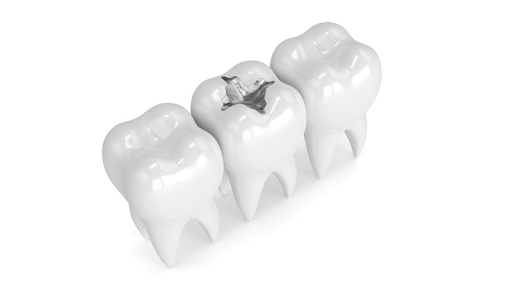The jagged nail pushed through the skin, causing the owner of the toe to squirm in agony with every step.
No, that’s not an excerpt from a horror movie about bizarre forms of torture. It’s a fairly accurate description of an ingrown toenail.
They’re nasty. They’re painful. And if left untreated, they can cause you a world of hurt.
In this article, we’ll give you a full breakdown on this ailment, including common ingrown toenail symptoms and how to treat them.
Table of Contents
Ingrown Toenail? What’s That?
If you’ve never had one before, consider yourself lucky. Ingrown toenails happen when the edge of the toenail grows into the surrounding skin. It’s most common on the side and corner of the nail.
It’s also most common on the big toe, but it can happen on the little toes too. They’re not considered a medical emergency. But if you don’t get it treated, an ingrown toenail can turn into a real pain in the foot.
My Toe Hurts! Ingrown Toenail Symptoms
Curious how to know if your toenail is ingrown? Let’s go over the most common ingrown toenail symptoms.
Redness and Warmth
The first thing you might spot is redness around the nail. You’ll see this discoloration where the nail meets the skin. And along with the redness, the area might feel warm to the touch.
Swelling
If the corner of your toe is swollen and tender, you’ve probably got an ingrown nail. Swelling is a bad sign because it means the area is infected. You may even spot the swelling moving down your toe and onto the top of your foot.
Blood or Pus
Telltale signs of infection, blood, and pus mean you’ve let the infection go way too long. If you see any kind of fluid oozing from the side of the nail, it’s time to see a doctor asap.
Overgrown Skin
Often you can see where the nail breaks into the skin. It causes the skin too well up around the nail. And it will look uneven and protruded.
Pain
The most obvious sign of an ingrown nail is the pain. It’ll be painful to touch, put into your shoes, and walk on. Most of the time, pain from ingrown toenails is not sharp, but rather dull and increasingly difficult to bear.
Treat ‘Em or Lose ‘Em
It’s important that you keep a close watch on your toenails to prevent this issue (more on that in a sec). If you see any of the symptoms listed above, it’s time to start treatment. If it’s not infected (ie, oozing fluid and swollen) you can try treating it at home.
Soak your foot in warm water for 15 minutes. Then dry the area completely before pushing the skin back from the nail with a cotton ball. If you can reach the edge of the nail, cut it horizontally straight across the top.
Once that’s done, use over-the-counter pain medication to keep the pain down. And apply topical antibacterial cream to prevent infection. Repeat soaking your foot several times a day until the pain and redness is gone.
Another treatment for ingrown toenails is to use lemon wedges. Apply them to the nail area to clean it and heal it faster. Check out this article to learn more about that process.
If the nail is infected, see your doctor right away. They may need to do surgery to correct it.
Nail surgery usually involves the doctor numbing the toe and then cutting away the part of the nail that’s growing into the skin. This saves your nail and prevents another ingrown nail from growing there.
In other, more rare cases, the infection is so bad that the doctor must remove the entire nail. This is usually the case when your nails are thickened because of poor circulation.
Prevention is the Name of the Game
If this sounds like the kind of experience you’d like to avoid at all cost, you’re right. Fortunately, there are plenty of ways to prevent ingrown toenails.
You may be more likely to have ingrown nails because of the shape of your nails. Also, diseases like diabetes mean you have a higher likelihood of developing them. In which case, prevention is even more important.
Good Foot Hygiene
First, practice good foot hygiene. Keep your feet clean and dry whenever possible. Don’t let them sit inside warm, wet shoes for too long.
Cut your nails often, but not too often. You don’t want to cut too close to the bed of your nail. But you also don’t want them growing past the skin on your toes.
And remember to cut them straight across. Resist the urge to cut down into the corners of the nail. This causes the nail to grow into the skin more than a nice, straight corner cut does.
Post-Injury Care
Pay special attention when you have a nail injury. This might be stubbing your toe, catching the nail on something, or a sports injury. This is especially important for ballet dancers who put lots of stress on their toenails.
Whenever you do have a nail injury, treat it like you would an ingrown nail. Soak it and cut it straight across.
Proper Footwear
Wear shoes that fit. When shoes pinch your toes, they put pressure on the side of the nail. This makes it more likely it grow into the skin. This rule applies to tight socks and stockings too.
If you work in hazardous areas like construction zones, wear boots with reinforced toes. This gives you an added layer of protection against toenail injury.
Don’t Let Your Toenails Grow Wild
Ingrown toenails don’t heal on their own. So, don’t wait to treat yours. Treating the nail is much easier than treating a blood or bone infection.
Keep an eye on your toes. Take care of them by keeping them clipped, but not too short. Also, keep them clean and dry as much as you can.
If you spot ingrown toenail symptoms like redness, oozing, and overgrown skin, you probably have an infection. See your doctor immediately. And work on keeping ingrown nails away with the prevention techniques we discussed here.
You’re more likely to get ingrown toenails when you’re overweight. Check out this article about the importance of getting your weight under control with a healthy diet.











